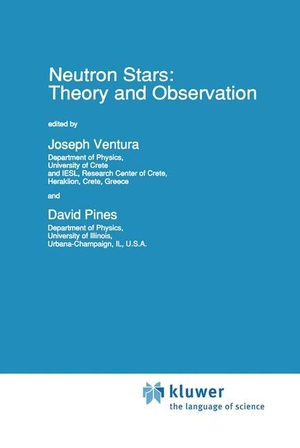Für statistische Zwecke und um bestmögliche Funktionalität zu bieten, speichert diese Website Cookies auf Ihrem Gerät. Das Speichern von Cookies kann in den Browser-Einstellungen deaktiviert werden. Wenn Sie die Website weiter nutzen, stimmen Sie der Verwendung von Cookies zu.
Cookie akzeptieren
Neutron Stars: Theory and Observation
- Springer Netherlands
- 2012
- Taschenbuch
- 608 Seiten
- ISBN 9789401055659
Some twenty-three years after the discovery of pulsars and their identification as rotating neutron stars, neutron star physics may be regarded as comingofage. Pul sars and accreting neutron stars have now been studied at every wavelength, from the initial radio observations, through optical, X-, and "{-ray, up to the very recent observations in the TeV region, while theorists have studied in some detail relevant physical processes both outside and inside neutron stars. As a result, comparisonof theory with observation provides a test ofour theoretical ideas in fields as diverse as neutron and nuclear matter, superfluidity and superconductivity, the acceleration of high energy particles, and the generation
Mehr
Weniger
zzgl. Versand
in Kürze